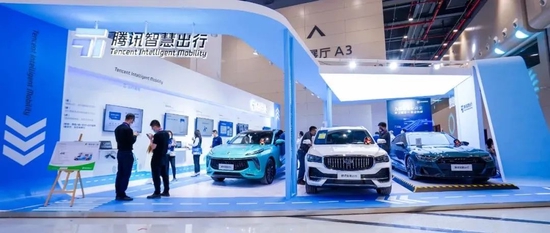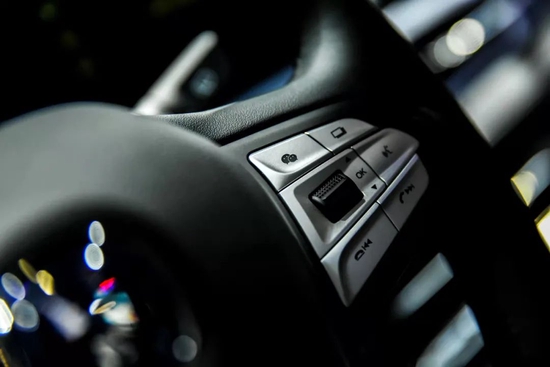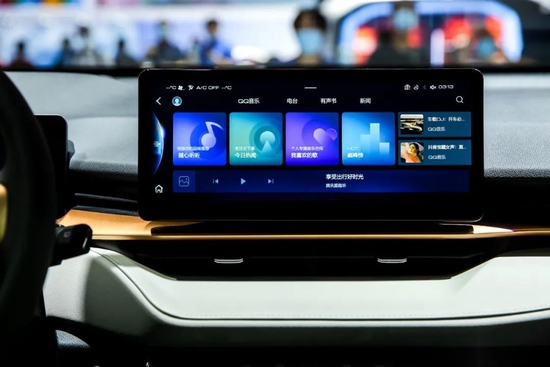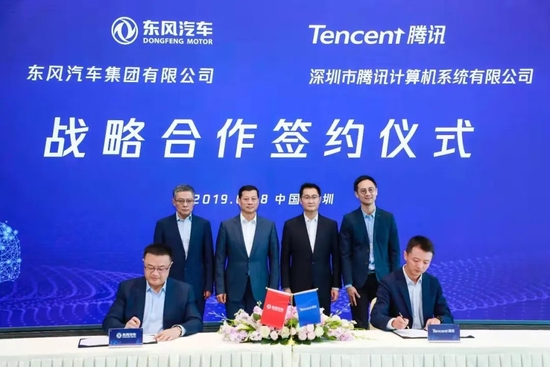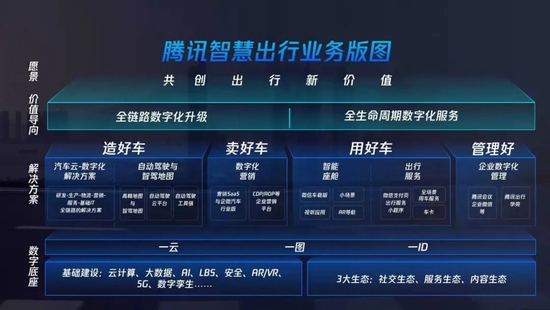Welcome to follow the WeChat subscription account of "Sina Technology": techsina
Wen/Wang Pan
Source/Photon Planet (ID: TMTweb)
On January 17, the China Passenger Association predicted that the penetration rate of new energy vehicles could reach 22% this year. "It was originally expected that the sales volume of new energy passenger vehicles would be 4.8 million in 2022, but it should be adjusted to more than 5.5 million at present".
The increase in the penetration rate of new energy vehicles not only indicates that the market has improved its recognition of electrification, but also will accelerate the process of intelligence and networking.
Huawei and Tencent are the only two of the top four BATH players in the Internet of Vehicles. The difference is that under the "Celes" model, Huawei's car enterprises have become migrant workers. After the launch of the new brand AITO in December 2021, Celis had to face the embarrassing situation of "no birds flying, no good bows hiding; no rabbits dead, no dogs cooking".
It is no longer important to talk about whether Huawei makes cars or not. After all, mobile phones have stagnated due to the restriction of chips, and car manufacturing can take on the dilemma of consumer business loss.
On the other hand, the reason why Tencent does not build cars is much more complicated. One basic point is that Tencent Smart Travel is under the overall to B strategy. Therefore, when understanding Tencent Smart Travel, we should not be limited to the field of Internet of Vehicles, but also take into account its numerous enterprise services for automobile manufacturers, especially digital transformation.
In short, Tencent is far more than just trying to "get on the train".
Tencent Smart Travel in the context of To B
Tencent knew its boundaries and finally chose not to build cars.
First of all, under the "930" reform, Tencent's "to B" strategy cut off the idea of car building. In hindsight, several organizational structure adjustments, ranging from personnel to layout, have bypassed "car building".
"Do something, don't do something". In April this year, when Tang Daosheng answered the question about Tencent's car building, he gave a clear reason: Tencent would not touch the hardware field, had not made mobile phones in the early years, and now would not build a whole car.
From the perspective of time, the "930" reform in 2018 has set the tone for Tencent's Internet of Vehicles business. A new Cloud and Smart Industry Cluster (CSIG) has been established. The Smart Travel Business Unit is the following secondary department, which has become Tencent's unified window for customers in the automotive industry.
As for staffing, it is "Tencent" that many of the personnel involved in the project are not from the Smart Travel Business Department. In the words of Zhong Xuedan, the person in charge, "a lot of cross departmental personnel are called by us".
Different from other Internet giants, Tencent's small front desk and large and medium-sized platform models mostly adopt a collaborative mechanism when developing car connected business, especially after the implementation of the "to B" strategy, Tencent's Smart Travel Business Unit has extensive collaboration with AI, LBS services, TME (Tencent Music), WeChat and other departments.
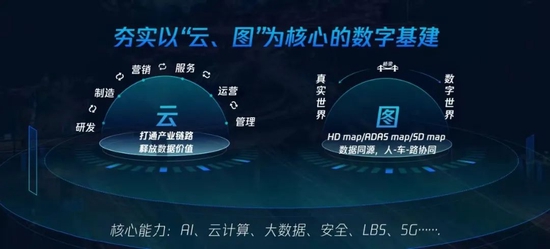
An insider explained that Tencent would set up joint project teams for different projects to carry out cross sectoral collaboration, for example, in terms of vehicle voice, the Smart Travel Business Department would set up joint projects with the Smart Platform Department; In terms of vehicle entertainment, a special team will be established with TME. It is difficult for the outside world to describe Tencent Smart Travel Business Department in terms of the number of people and organizational system. Due to the existence of a collaborative mechanism, a large number of people do not have a "household registration book".
However, most of the peers are just one turnip and one pit.
For example, Huawei set up an intelligent car solution BU in May 2019. Both of them are the first level departments under the group. The intelligent car solution BU has more than 500 people. Xiandou Intelligent, which was founded only two years ago, has more than 500 research and development personnel. Baidu needless to say, Ali reorganized the original automobile business unit into the automobile and intelligent travel business unit in April 2018.
Another impact of the "930" reform is that Tencent's smart travel business group focuses on exporting technical services to enterprises. It is worth mentioning that the automatic driving business and Internet of Vehicles business also related to vehicles are included in the Smart Travel Business Department. Zhong Xiangping, Vice President of Tencent, President of Tencent Smart Transport and Travel, has repeatedly stressed that "Car Service and driverless driving are equally important businesses of Tencent".
At the same time, to B, this set of architecture settings shows that Tencent regards automatic driving and smart car business as "products" of to B, rather than the industry's usual packaging together to facilitate the output of a complete set of solutions.
Another reason for not building cars is that auto companies are an important customer group of Tencent. In other words, Tencent cannot eat the food of car companies, smash their bowls and rob their food.
In the opinion of Li Bo, general manager of Tencent's smart travel industry, several giants currently involved in the Internet of Vehicles are more or less involved in some car building businesses, while Tencent not only has no hardware talent pool, but also has no coverage of investment. "Tencent is the last thing they (car companies) worry about (car building).".
After 2010, the voice of "do it or not" will appear inside Tencent when almost every outlet comes. "Do you think O2O and e-commerce should do something?" Li Bo believes that the "to B" strategy determines what to do and what not to do. "The purpose of setting up CSIG is to help partners... we should not be both judges and athletes, so we chose a position, not to leave the court".
Since there is no potential competition for automobile enterprises, it is much easier to "get on the train".
Lv Da, the commercial director of Tencent Smart Travel, can use the word "connector" to summarize: "The whole CSIG and relevant departments have positioned themselves as connectors of car enterprises. If they build cars or hardware, they may lose the positioning and value of such a connector".
From the perspective of utilitarianism, the value of doing technical services is not lower than that of making cars.
Last year, China Commercial Industry Research Institute predicted that the market size of automatic driving would exceed 235 billion yuan in 2021, and iResearch predicted that the market size of Internet of Vehicles in the same period would be 369.7 billion yuan. By comparison, it can be roughly understood that the "connection" in Tencent's mouth is indeed invaluable.
From the past history, Tencent's car building is not worth expecting. Tencent has a strong "soft" strength, but it is more like a ticket fan in the hardware field. The few trials did not splash much. These cases in the hardware field show that Tencent's channels and supply chain are weak, product positioning is biased, and resource investment is insufficient.
In fact, not building a car is the result of Tencent's organizational structure, personnel size, overall strategy and hardware experience. Moreover, not building a car does not mean Tencent will miss the era of smart cars.
Getting on the bus is not so easy
Giving up car building does not mean Tencent has given up car end intelligence, on the contrary, it has also spent a lot of thought.
Tencent's official involvement in the Internet of Vehicles market began in 2017, when the cooperative enterprises were mainly GAC, Chang'an and Liuqi, which happened to be the cases often mentioned later in the "to B" strategy.
In the early days, "the service capability on today's Internet was substituted into the car, such as map service and voice interaction". Zhong Xuedan remembered that when Tencent just built the Internet of Vehicles, it encountered two common problems facing the industry. One was that the map accuracy was not high, and the other voice interaction faced huge challenges and difficulties in noise reduction and recognition.
Tencent's map and speech recognition products were born in mobile ecology and proved to be successful in many scenarios, but no one expected "acclimatization" when moving to the end of the car. Unlike the rigid demand for map and voice interaction, the process of WeChat getting on the train is extremely bumpy.
WeChat has established a large enough number of users in the mobile era. "There is no problem without getting on the car, and the number of WeChat users will not decrease". An executive of an autonomous driving enterprise gave another view. He believed that the industry is immature now, and the risk of getting on the car easily is high. "When the car is not always mature, you can just pick the fruit directly".
The Innovator's Dilemma once mentioned the theory of disruptive innovation and continuous innovation: WeChat has become an industry leader with multiple disruptive innovations. With the expansion of its market share, any small problem will be magnified by the scale of 1 billion users.
Even though there are ten thousand reasons to hinder WeChat from getting on the bus, the car companies can't stand it, and users hope that the voice of WeChat getting on the bus is getting higher and higher. Chen Ji (not his real name) has long been responsible for the docking work between Tencent and auto companies. In his opinion, domestic independent brands are still in the stage of overtaking on the curve, paying more attention to the needs of young consumers, and relatively small auto companies have less burden to try to innovate.
The process of getting on WeChat is far from easy.
Zhou Feng, the general manager of the Strategic Planning and Technology Development Department of Dongfeng Company, directly participated in the cooperation with the senior management of Tencent. At that time, many people proposed that WeChat should be moved to the car. Surprisingly, the first person who objected was WeChat itself.
Zhou Feng recalled that Zhang Xiaolong believed that "when you play with mobile phones and WeChat, this car will become unsafe and will not do it". In addition to safety, an insider also mentioned that in the mobile era, Zhang Xiaolong is taught to do WeChat every day. If he gets on the bus casually, "there will be a bunch of people who teach Zhang Xiaolong to get on the bus".
After many tests, the team finally formed a methodology with the color of "software defines hardware": set a key on the steering wheel to wake up WeChat. This scheme is now accepted by more and more car enterprises.
In August 2019, the flagship car CS75 PLUS launched by Chang'an was equipped with WeChat full voice interaction based on this solution. In combination with the WeChat exclusive buttons on the steering wheel, drivers can send and receive WeChat messages without looking at them or touching the screen with their hands. As a result, the market response is strong, and some user oriented car companies continue to receive users' feedback on "why a certain car is OK, but your family is not". From this point of view, user demand is one of the most important forces to promote WeChat to get on the car.
However, some automobile enterprises oppose from the perspective of cost and production. Adding a button on the steering wheel seems very small, but for large-scale production car enterprises, the design phase has frozen the scheme and delivered it to production. Not to mention digging a hole and installing a button, just adding a WeChat icon will cause huge time and money costs.
For a time, car companies did not understand why Tencent insisted on adding WeChat buttons to the steering wheel. After many communications, they realized that it was because of safety problems. Wang Wanxin, general manager of Tencent Car Service, said that there was only one consideration for getting on the car via WeChat: "In order to make consumers drive more safely, don't let the frequent reading of WeChat affect their driving safety".
Between security and economic benefits, Tencent spent a lot of energy to mediate, and finally persuaded the manufacturer. Great Wall has made a model suitable for WeChat. The WeChat team is fully cooperating and constantly adapting to customer needs.
Chen Ji remembered that at that time, in order to fit, he had to use it while changing.
"You are too difficult to use. I have to shout" answer, hang up, cancel "after WeChat arrives. After receiving user feedback, Great Wall had to follow the previous scheme again: set a WeChat button and add LOGO. To this end, a special video guiding users how to operate is also provided.
It seems that WeChat is not as "silky" on the car end as the mobile end. Someone once asked Tencent's Internet of Vehicles team: "Why do you do it so simply?" The answer was "You do too well, have too many functions, divert users' attention, and it is hard to say if there is a safety accident".
Although the consideration of safety has limited the expansion of product functions, both Tencent and auto companies have realized that safety is the most important issue, providing a new idea for WeChat to get on the bus on a large scale. Some vehicle enterprises with strong platform capability, such as Great Wall Motors, quickly spread the cooperation framework to all models.
All kinds of signs show that the most successful WeChat in the mobile era will start from zero when it comes to the car end.
break up the whole into parts
Photon Planet has learned from more than ten insiders that many technical service providers want to provide a complete set of solutions, in fact, they have technical considerations.
When Chen Ji docked with automobile enterprises, he found that many automobile enterprises could only accept WeChat on the application level. However, in fact, even on the car end, WeChat will need to link the entire ecological content due to positioning information, different audio quality, and even pop-up windows of small programs.
This industry cognitive bias is gradually understood by car enterprises as more and more products are put into cars.
A start-up Internet of Vehicles enterprise is preparing for the first battle. The company has just been founded for half a year. People need to recruit now, and they are also busy changing the concept of people from traditional car companies. Solving the core problems has exhausted the start-up company. Their own system still lacks a lot of in car ecology.
It's like that when delivering a house, only a set of framework for the main structure has been put up, without internal and external painting, nor any decoration, so consumers will certainly not buy it.
The R&D leader of the above enterprise told Photon Planet that after the team realized the problem, the company introduced Tencent Car Service to solve many problems, including not only WeChat, but also maps, voice and multimedia. In April 2020, the new car equipped with the new system was finally launched.
After the epidemic, the Internet of Vehicles and automatic driving experienced an obvious turning point. Capital began to pursue new forces in car building, and intelligence on the other side gradually became the industry consensus. This is both an opportunity and a challenge for technical service providers.
The biggest difference between car companies and Internet companies is actually in the metaphysical level, such as understanding the underlying logic of products. This difference causes them to look at the physical products in a different way. In order to bridge the two camps and maintain cooperation, those who have both traditional manufacturing and Internet experience become rare talents, such as Chen Ji.
Even though he is familiar with the manufacturing industry and has been immersed in the Internet for many years, as the person in charge of docking with the Great Wall, he still encountered some problems in promoting the QQ Music on board project.
In 2018, Chen Jigang began to dock with the Great Wall, just in time for QQ Music to get on the train. The department colleagues found the car factory with the scheme in their hands, but they were poured cold water. Because the car company believes that "music needs to obtain gear information", it is OK to get on the car, at least when the car is in reverse gear, the music must be turned off.
In his opinion, the thinking with mobile terminal can not form a positive interaction with car enterprises. In the eyes of Internet users, the mobile phone has never been in reverse gear, while in the view of car companies, turning off music is a hard requirement for car regulation.
There is no way, Chen Ji can only stay in the car factory with his colleagues, trying to look at his products from the perspective of the car company. Finding solutions by squatting in the car company is bound to be an ideal. The reality is that even if he knows where the problem is, he also knows how to solve it. But once the car model is changed, or even the car company is changed, his solution is not working.
"Making cars is actually the result of mutual compromise". Chen Quan (a pseudonym), an automotive engineer, has ten years of experience in the workshop. In his eyes, not to mention the gap between the technology enterprises and the car enterprises, each department of the car enterprises will often quarrel with each other.
Chen Quan believes that the biggest problem for technology enterprises to build cars is that they think technology can guide everything, ignoring the precipitation capacity of the car enterprises, which leads to many new forces frequently appearing security risks.
He once speculated that there might be some deviation between Bosch's packaged system and Tesla's demand when reviewing Tesla's "brake rights protection incident", which led to the system's misjudgment of power recovery, forward, braking and other signals.
"Both auto companies and Internet companies attach importance to security, but how to do it is really different."
Chen Quan always believed that "it is not feasible to stack sensors for automatic driving". With the deepening of intelligence, it is sooner or later to return to safety. He concluded that no matter how good the new force's automatic driving is, it cannot ignore the control problem, which is just the advantage of traditional car companies.
Internet companies cannot reverse develop. If the original vehicle controller algorithm does not have an open interface and active control function, even better than Baidu, if it does not cooperate with the vehicle enterprise, it will not get the DBC file (dynamic body control system).
Traditional automobile enterprises accelerate Internet
The rapid growth of Weixiaoli once made the outside world think that the traditional car companies were sunset flowers. Many people generalized it as "gene". It is learned from a number of car enterprises that what they think they are not "Internet" is mainly the market model and organizational form.
Zhan Suchi, Deputy General Manager of Dongfeng Operation Management Department, believes that traditional car enterprises do not lack Internet foundation, but start late in the aspect of consumer Internet. Relying on 4S stores makes it difficult for car companies to perceive market demand, and they do not know what users want.
It is not easy for traditional car enterprises to establish direct contact with users. Under the thinking of "engineers", most enterprises think that standardization is the best, ignoring the feeling of products in the hands of users, and totally relying on 4S stores to deal with sales, resulting in "some information is blocked and selectively transmitted to us".
"We have 52 million cars under warranty, but we didn't know what happened to these cars before." Not only Dongfeng, but almost all traditional car companies are facing similar problems. Although digital marketing can solve problems, it is difficult for enterprises to take even one step because of years of deep-rooted inertia and intertwined interests. And B2C capability can not be developed overnight, so Dongfeng thought of Tencent.
In the process of cooperation, Landu, a subsidiary of Dongfeng, rebuilt its customer marketing system through Tencent's content and social ecological diversion, such as splitting into Landu customers in the social ecology of WeChat.
In the traditional sales model, users will go to the store to see the car first, and then test drive, so the test drive rate is an important assessment indicator for sales personnel. After the digital transformation, the test drive rate was replaced by the conversion rate. Dongfeng found that "the user's arrival at the store is just to verify whether it can be cheaper", and the test drive is not so important.
As observed by the outside world, the cooperation between automobile enterprises and Internet enterprises is not as good as the superficial friendship. They are the leaders of their respective industries. When encountering differences, either party is too strong, which will easily lead to conflicts.
"We put our attitude relatively low". When asked how to resolve the differences with the car companies, Li Bo's answer was surprising. "You will find that no matter the car or the marketing platform, you rarely hear Tencent's own voice in the outside world."
In the process of cooperating with Internet enterprises to solve marketing problems, many automobile enterprises realize that the more important thing is the form of organization. Chen Quan called it "the inertia of the manufacturing industry". He has done several technical jobs, and many years of experience told him that to build a car is the first thing that affects the whole body.
"If you want to add a zero gravity device to make the seats more comfortable, you need to find a car space. The person in charge of the car space will ask you to find an interior decoration, and the person in charge of the interior decoration will ask you to find a space size, and finally throw it all to the structure". This model is clumsy compared with the flexible organization model of Internet enterprises.
In the process of cooperation with Tencent, automobile enterprises realized that the "flexibility" of Internet enterprises can be summed up in one sentence: organizational commitment strategy.
"Whole body surgery is too difficult and the resistance is too great", an industry insider told Photon Planet that in recent years, traditional car companies will let a vice president go out to become a new brand, and everything will be free from any burden from scratch, such as Landu under Dongfeng.
Great Wall is another representative. At the earliest, the company had a set of "wolf and rabbit spirit". Based on keen and efficient consideration, its transformation process was relatively smooth, and it completed several organizational transformations.
The biggest feature is the unitization of front office business operations. Chen Xianling, the CDO of the Great Wall, told Photon Planet that now the Group's more than 30 combat units have their own commodity, project and marketing directors, and they get through each other, so as to ensure that H6, M6, white cat, black cat, tank 300, etc. can fight independently without following the shortcomings of hierarchical decision-making in the past.
After the success, the Great Wall was out of control. The autonomous driving team that existed as early as 2009 has become an independent force after the Internet in recent years, similar to Xiandou Intelligence in the field of Internet of Vehicles and Noble Technology, which is capable of doing self research of intelligent cockpit stacks.
In the cooperation with Tencent, the Great Wall has gradually been influenced by Tencent's "horse racing mechanism", which not only does not avoid multiple lines of progress, but also constantly "introduces wolves into the house" to promote its own capabilities.
"Although it is a very competitive subsidiary of Great Wall Autopilot, we will still introduce Huawei and Momenta; In the cockpit, we have Xiandou, but we will still introduce Ambofu to compete with other manufacturers; Even in traditional areas, such as seats, with Noble Technology, we will still introduce Faurecia and Lear. "
Dismantle the end and cloud "Fence"
In the past 20 years, even if the Internet is as big as Tencent, it has also realized that "fast but not broken" does not apply to the industrial Internet, which is regarded as the next huge market by most enterprises.
Tang Daosheng reflected earlier that some industries had experienced periodic impetuosity, and it was difficult to sustain large-scale subsidies. If the tide receded and pigs could not fly, it would be too late for all giants to return to the demand side and see what customers really need.
Faced with various demands for digital upgrading of traditional car enterprises, Tencent considers more about "getting on the car" from the perspective of industrial digitalization rather than whether to build a car.
In other words, when technology companies pour into the track and form a confrontation with traditional car companies, Tencent's path is more like a comprehensive service provider of industrial digitalization, rather than just many people seeing Internet of Vehicles or a single map service. This can also understand why Tencent always talks about the Internet of Vehicles in the context of to B.
The demand of the automobile market is personalized, the industry competition is intensified, the R&D cycle of new cars is shortened, and in addition to intelligence, all enterprises have the demand for digital R&D. R&D is transmitted to the supply chain, making relevant enterprises want to reduce costs and increase efficiency, and then forming digital demand for production and supply chain.
The emergence of new forces in car manufacturing makes traditional car companies realize that it is not just selling a car, but user operation, and it is more effective to directly connect users through social fission than service outsourcing. In addition, new business models, such as OTA, shared travel, cockpit user operation and other scenarios that may appear in the future, all rely on digitalization.
Because not only are cars iterative, but also car manufacturing enterprises need to face digital transformation. It can be seen that Tencent has become increasingly cohesive with the industry.
For example, when Dongfeng Group wants to go to the cloud, Tencent connects the public cloud with the private cloud, and its independent brand Landu Auto uses Tencent's digital marketing solutions. In terms of vehicle safety, SAIC cooperated with Tencent to establish a joint safety laboratory. According to the latest data released by Tencent, in the field of smart cockpit, Tencent's Internet of Vehicles solution has been carried on 7 million+vehicles.
In the process of promoting the digitalization of the automobile industry, Tencent's business landscape is centered on cloud and map. This includes not only the car front market (car R&D and manufacturing), digital sales, but also the car rear market (car engine software ecology) with more complex needs.
In the mobile era, whether Jingdong or Qiongduo, Tencent relies on "half life" to become bigger. The main reason why Tencent has become successful is that its partners are all on the same boat. In the era of industrial Internet, many people and many ships are separated from each other. What Tencent has done is actually an upgraded version of "half life".
This could lead to a completely different business model.
An engineer of a traditional car company told Photon Planet that "Internet companies can't just use the OEMs as advertising slots, thinking that they can get on the car with money". He even thought that no matter how nice the words are, how good the technology is, the essence of technology companies is to get in car traffic.
The traditional perception that "Internet enterprises are eager to get on the bus in exchange for in car traffic" is being overturned. Nowadays, more and more people realize that the future of cars is a whole chain of end cloud interaction, so there is no one who gets on the car. This requires auto companies and the Internet to create value together, connect the factory, store and car service users, and continue to explore new commercial value.
Photon Planet noticed that Tencent Music will let car companies "participate in the sharing of music" in the process of getting on the bus, which is very attractive for car companies. It can not only arm itself with mature content ecology, but also enrich the revenue structure. It is worth mentioning that content industries such as online music, which are difficult to realize in the mobile era, will have new markets in the car space.
When the partners become better, Tencent can also benefit from it.
If you want to guard inside, build walls high; If external protection is required, remove the wall. More than 500 years ago, Machiavelli tried to persuade the Medici family that if they want to become strong, they must learn to open up and participate in competition. Unfortunately, it was not adopted, and Florence under the family rule became mediocre.
In the era of industrial Internet, whether it is a host computer factory or a technology enterprise, it should be aware that no one can win take all. Only by breaking barriers and moving towards cooperation can they be invincible in the competition.
